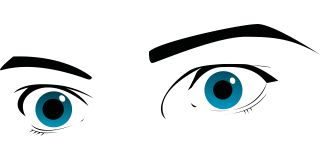Body Language
7 Weird Nonverbal Behaviors You Unwittingly Perform
These behaviors can sometimes be seen as rude, so it's important to be aware.
Posted July 27, 2023 Reviewed by Ray Parker
Key points
- The eyebrow flash and shaking hands are nonverbal cues of greeting that are often subconscious.
- Subtle nonverbal cues like pupil dilation and facial expressions can be missed.
- Some of our unwitting nonverbal behaviors might give others the wrong impression.

Very often, we unknowingly give off subtle, nonverbal cues that may send messages to others that we are completely unaware of. Others may draw messages from our cues and respond, and we are at a loss. Here are seven that have been the focus of research in nonverbal communication.
- The Eyebrow Flash. You are walking down the street, look up, and see a friend, and your body responds, Ethologist Eibl-Eibesfeldt (1972) gave this term to the very fleeting raising of eyebrows that typically occurs when we suddenly see someone we know. Eibl-Eibesfeldt believed that this was a below-consciousness universal greeting that all people perform, although that has been disputed. But most of us do indeed give an eyebrow flash when we see a friend, or often, when we make eye contact with strangers.
- Blinking and Pupil Dilation. Although the physiological function of blinking is to lubricate our eyes, research suggests that blinking can also be a form of communication. There is some evidence that others may see short blinks as a cue that we are listening to them, while long blinks may suggest that we are inattentive and potentially bored. Pupil dilation is an even more subtle cue. There is evidence that our pupils dilate when we are interested in something that we see. You encounter a very attractive potential dating partner, and your pupils automatically dilate. Odds are that your target of interest doesn’t notice, but subconsciously, perhaps they do.
- Micromomentary Facial Expressions. Human facial expressions are one of the best means of nonverbal communication of our emotions. However, we learn to monitor and control our facial expressions when we want to hide our true feelings. There is some evidence, though, that even when we try to prevent our faces from telegraphing our felt emotions, there may be a fleeting expression—perhaps only a fraction of a second—allowing others to read what we are truly feeling. (Ekman & Friesen, 1974)
- Clapping. We are in a crowded theatre and the program’s star comes on the stage. The crowd breaks out in applause. Although much of our clapping is voluntary (and often related to conformity; we clap because everyone else is clapping), sometimes we clap involuntarily, as when we are suddenly startled or excited. Click here to learn more about the psychology of clapping, coauthored by my friend and nonverbal communication expert, Alan Crawley. (Riggio & Crawley, 2022)
- Staring. You see someone interesting, or perhaps someone with an odd mark on their face. It causes you to stare—to look at the person longer than a normal glance. The other person can’t help but notice your stare, and you didn’t mean to do it. In fact, parents often teach their children to monitor and control this very involuntary staring behavior. But, we can also use staring—holding another’s gaze for a bit longer than normal—as a sign of sexual interest. Clearly, nonverbal communication is subtle, but also quite complex.
- Nervous Cues. Some people have the habit of bouncing or shaking their legs or rubbing their hands together, almost compulsively. Even though these behaviors might have a completely innocuous origin (self-soothing), others may interpret these behaviors as cues of “nervousness” or “anxiety.” That’s one of the reasons why if a person engages in a lot of these behaviors while telling us a story, we might suspect they are lying (Why is this person so nervous?), when they may be completely honest. (Riggio & Friedman, 1983)
- Shaking Hands. Yes, shaking hands is something we do voluntarily, but it can also occur unwittingly. We meet someone, and we extend our hand. We might even have found it difficult during the pandemic to keep ourselves from shaking hands, even though we feared getting the coronavirus. Ritualistic behaviors, such as this greeting, can become so ingrained in us that we are completely unaware that we are doing them.
References
Eibl-Eibesfeldt, I. (1972). 11. SIMILARITIES AND DIFFERENCES BETWEEN CULTURES IN EXPRESSIVE MOVEMENTS. Non-verbal communication, 297.
Ekman, P., & Friesen, W. V. (1974). Nonverbal behavior and psychopathology. The psychology of depression: Contemporary theory and research, 3-31.
Riggio, R. E., & Friedman, H. S. (1983). Individual differences and cues to deception. Journal of personality and Social Psychology, 45(4), 899.
Riggio,R.E., & Crawley, A. (2022). Why we clap: The psychology of applause. Psychology today.


